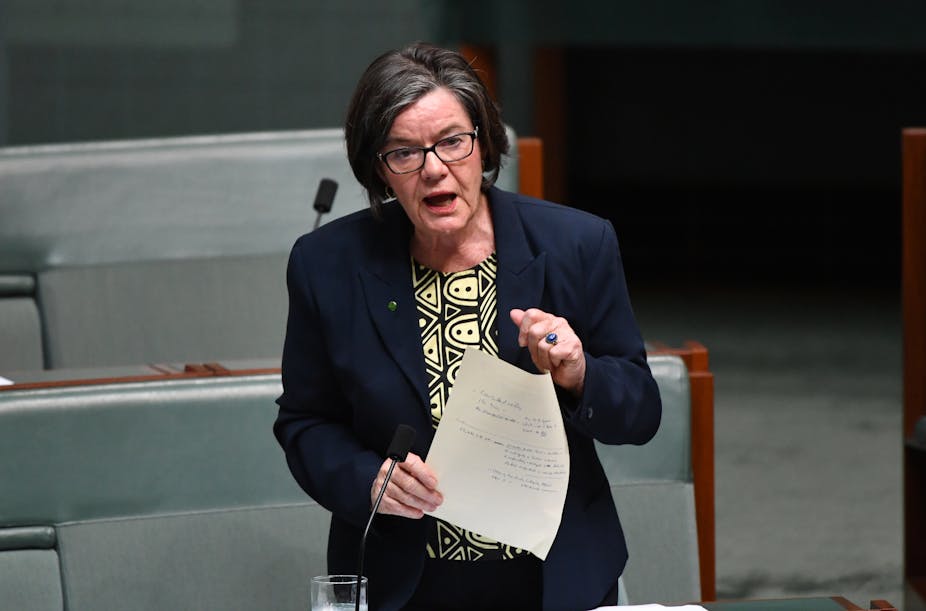The federal government has announced it will establish a Commonwealth Integrity Commission. This new commission will be the peak body to detect and investigate corrupt and criminal behaviour by Commonwealth employees.
This announcement followed mounting pressure from Labor, the Greens and independent MPs, who argued that a national integrity commission was vital to rebuild trust in Australian democracy.
Read more: Government agrees to national anti-corruption body – with strict limits
On November 26, independent MP Cathy McGowan introduced a private member’s bill for the introduction of a national integrity commission, further increasing the pressure on the government.
All Australian states have anti-corruption commissions, and the federal government is lagging behind in this area.
Why do we need this commission?
The case for a national integrity commission is strong.
Australia has fallen steadily in Transparency International’s global corruption index, from eighth place in 2012 to 13th this year.
More alarming is the fact that one in 20 Australian public servants said in a survey last year that they had seen a colleague acting in a corrupt manner. This figure has doubled in the past three years.
Moreover, a Griffith University survey has found strong public support for a national integrity commission, with two-thirds (67%) of Australians in favour of one.
What will the commission look like?
The commission will be an independent statutory agency led by a commissioner and two deputy commissioners. It will have two divisions: a public sector division and a law enforcement integrity division.
The Australian Commission for Law Enforcement Integrity will be reconstituted as the law enforcement integrity division with an expanded jurisdiction. But its jurisdiction will be limited to certain departments and agencies dealing with law enforcement and those that have coercive powers, such as the Australian Securities and Investments Commission.
The public sector integrity division has a broader coverage. It includes public service departments and agencies, parliamentary departments, statutory agencies, Commonwealth companies and corporations, Commonwealth service providers and any subcontractors they engage, as well as parliamentarians and their staff.
Is the proposed model adequate?
The proposed model is a watered-down version of an anti-corruption commission, with limited powers.
The Commonwealth Integrity Commission will have the power to conduct public hearings only through its law enforcement division.
Conversely, the public sector integrity division with the broader remit will not have the power to make public findings of corruption. Instead, it will be tasked with investigating and referring potential criminal conduct to the Commonwealth Director of Public Prosecutions.
This is a far more limited jurisdiction compared to its equivalent state counterparts, such as the New South Wales Independent Commission Against Corruption (ICAC), which has the ability to conduct public hearings and make findings of corruption in the public sector.
Although it is envisaged that the Commonwealth Integrity Commission will play a role in preventing corruption, this model lacks a dedicated corruption prevention division. This is a pro-integrity function that monitors major corruption risks across all sectors.
Read more: Australians think our politicians are corrupt, but where is the evidence?
There are also other activities that do not amount to corruption, but nevertheless show an undue influence on government. Ideally, a federal anti-corruption commission should sit alongside a broader package of reforms that impose stronger rules on lobbying and political donations, as well as a code of conduct for MPs, policed by an independent commissioner.
This would form an interlocking political integrity system that would keep politicians honest.
The government is taking submissions on the proposed model for the Commonwealth Integrity Commission.
It is commendable that the government is finally taking action on anti-corruption measures. However, it is important to get the model right. The proposed model is an improvement on the status quo of patchwork regulation, but does not go far enough to properly investigate corruption in federal government.

